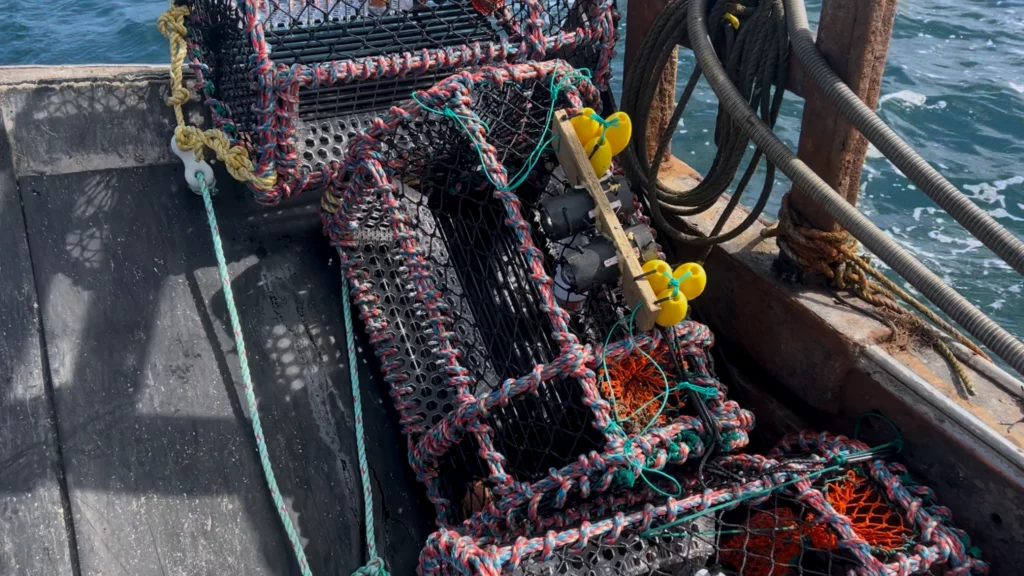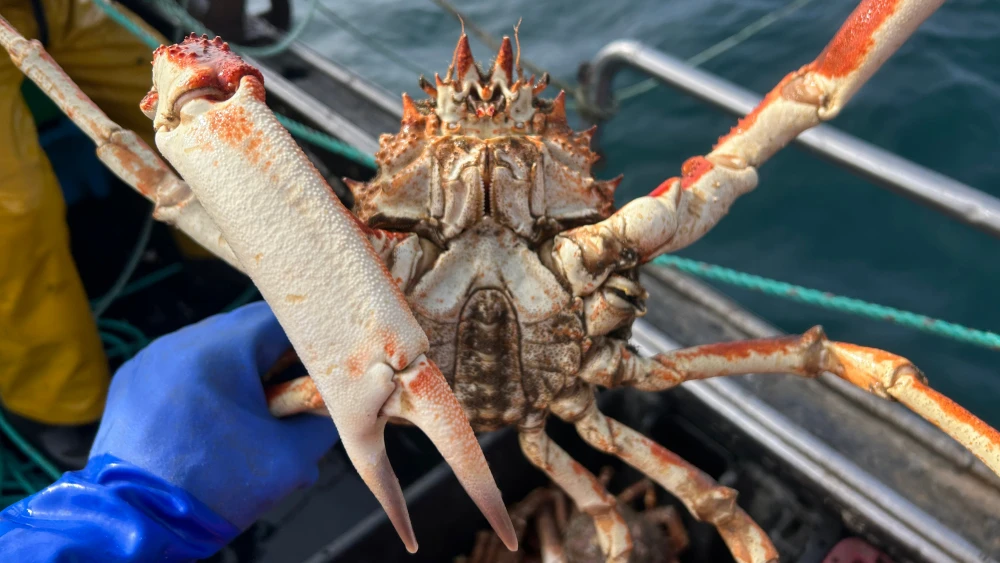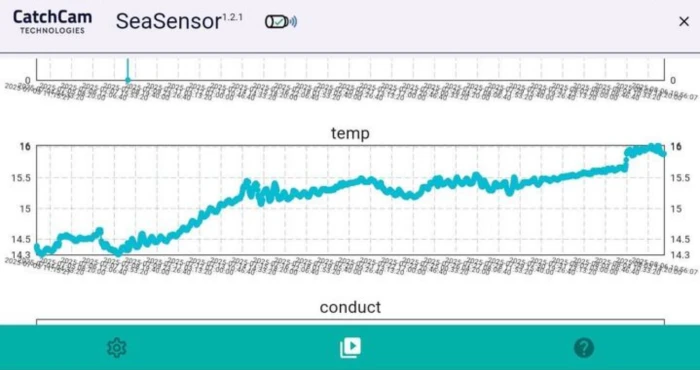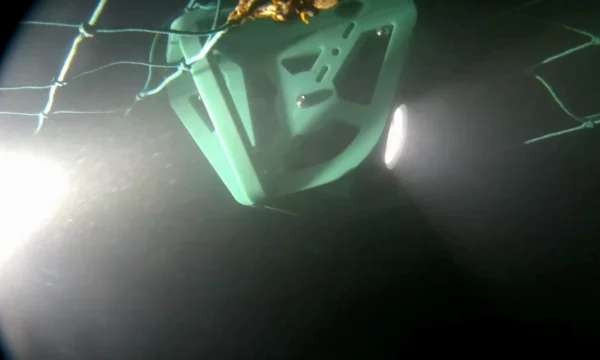A New Look at Scallop Fishing
For inshore fishermen, every trip is about making the most of the ground you’re on. Now, the same pots used for crab and lobster are landing scallops too. With Disco Scallops™ lights fitted inside the gear, fishermen are hauling valuable extra catch and increasing income. All without damaging the seabed.
Scallop fishing in Ireland, like elsewhere in the UK, has long been associated with dredging. A method that, while effective, raises concerns about seabed impact and fuel costs. So, pot-caught scallops offer a sustainable alternative to traditional scallop fishing.
But what really happens once the gear is underwater? That’s where the CatchCam camera comes in.
“Seeing how scallops, lobsters or crabs interact with the pots gives us a new layer of insight. It’s one thing to check the catch after hauling, it’s another to watch the animals make decisions underwater and interact with the gear - and each other.”
Tom Rossiter, CoFounder of CatchCam Technologies
Pot-Caught Scallops in Ballyteige Bay
This summer, our team at CatchCam Technologies joined Ireland’s National Marine Institute (Foras na Mara) and Bord Iascaigh Mhara (BIM) as part of the Disco Scallops Project. The aim was to study pot-caught scallops in Ireland and to understand how different species interact with modified gear.
Trials took place aboard the Eilidh C., a 10-metre vessel operating out of Kilmore Quay. And so, fishing grounds were set in Ballyteige Bay, South Wexford, an area already well known for shellfish.
CatchCam footage: Underwater view of Ballyteige Bay during scallop fishing with pots, showing diverse marine life around the deployed gear.
Disco Scallops: How scallop fishing works with pots and lights?
Currently, almost all UK scallops are caught using dredges, with only a small number diver-caught. Disco Scallops™ offer a sustainable alternative. They work with the pots fishermen already use for crab and lobster, making it easy to add scallops to the catch. In Ballyteige Bay, we deployed 70 rounded short-rectangle pots, each fitted with:
- ScallopLight™, small LEDs that flash at intervals proven to attract scallops.
- ScallopEye™ entrances, honeycomb-like plastic structures that allow scallops to swim inside.
These pots were then baited with herring, mackerel or scad.
That way, fishermen can keep catching crabs and lobster (or even crayfish) while adding scallops to the haul. It’s a true dual-purpose setup that brings extra income without extra work.
Adding a Camera to Fishing Gear
The role of CatchCam was simple: to record what happens underwater while the pots are fishing. The cameras were attached in two ways:
- Inside the pots – secured with zip ties through designated mounting holes.
- Above the pots – using a custom-built attachment to suspend the camera above the pots and capture a wider view. Want to try this yourself? Read our step-by-step guide to attaching CatchCam to static gear.
With the size and shape of a Coke can, CatchCam integrates easily into any creel or pot setup. After the haul, the crew retrieved the cameras along with the gear and used the wireless functionality to download the footage onboard.
This approach gave the team a clearer view of animal behaviour that can’t be seen from catch results alone.


CatchCam Insights: What We Saw Underwater
Although scallop catches were slow at first, the pots quickly began to prove themselves as dual-purpose gear.
Brown crab, velvet crab, lobster and even spider crab were caught. The scallop-eye entrance probably made it easier for spider crabs to enter and harder for them to escape. The wide opening could also suit crawfish.
On our deployment, we observed a lobster entering halfway into a pot, but then turning and exiting at the very last second, before the door closed behind it. This behaviour is very interesting and, if repeated, it may suggest that small design tweaks could help improve lobster catch rates.
CatchCam footage: a lobster enters a pot but exits at the last moment, revealing behaviour that could guide design tweaks.
Beyond catch behaviour, the cameras also captured biodiversity around the pots. Sponges, small fish, and other invertebrates drifted across the seabed, giving valuable data on the local ecosystem.
But perhaps the biggest surprise came from the scallop spat. Within just a month, hundreds of baby scallops had settled on the honeycomb-like “scallop eyes” inside the pots.

“It’s too early to know what this means for spat survival, but this could be a big step for scallop recruitment. We might have found a way to improve local stock numbers”
Tom Rossiter, CoFounder of CatchCam Technologies
The Role of CatchCam in Future Trials
The Disco Scallops trials are just one example of how CatchCam can help evaluate new fishing gear. By making the invisible visible, cameras give skippers, gear manufacturers, and scientists, a clearer picture of what works and why. For scallop potting in particular, CatchCam can:
- Confirm that scallops are responding to the light as expected.
- Show whether lobsters and crabs are affected by the new gear design.
- Provide biodiversity records from around deployed pots.
- Support fishermen in adopting new methods with confidence.
- It’s proof that video data is as valuable as the catch itself.
It’s proof that video data is as valuable as the catch itself.
Adding SeaSensor Data to the Picture
“We are trying something new here, so we know we have to learn along the way. Having a good scientific approach is a must, but learning from the CatchCam and SeaSensor gives us a massive advantage and will help us get there quicker”
Declan Roche, Eilidh C.
It’s not just about video. During the trials, we also gathered environmental data using the SeaSensor system, paired with CatchCam. In Ballyteige Bay, the sensors logged changes in seabed temperature over the course of the trials. At 15 fathoms depth, the temperature climbed by almost 2°C during the month of July.
This data helps explain shifts in catch behaviour. But it also helps us build a clearer picture of local conditions, linking species activity with the environment around the pots.

What's Next for Scallop Fisheries
Each deployment builds knowledge about how scallops and other species interact with pots. Over time, small design tweaks could lead to higher catch rates and stronger conservation outcomes.
Thus, the Irish trials will continue into autumn, with further deployments planned. CatchCam and SeaSensor remain part of the project, helping fishermen and scientists see what happens underwater and make informed decisions for more sustainable, profitable fishing.
The Marine Institute and BIM will publish a full report at the end of the project.
Join our Community
Sign up and get updates on trials, new footage, and practical advice for fishermen and researchers.
Join the 800+ people who get monthly updates from our team





